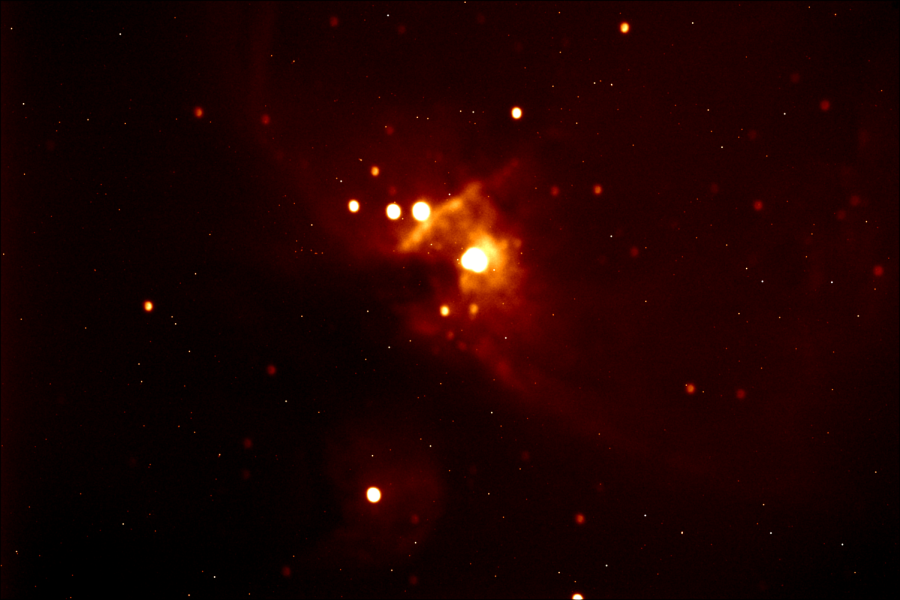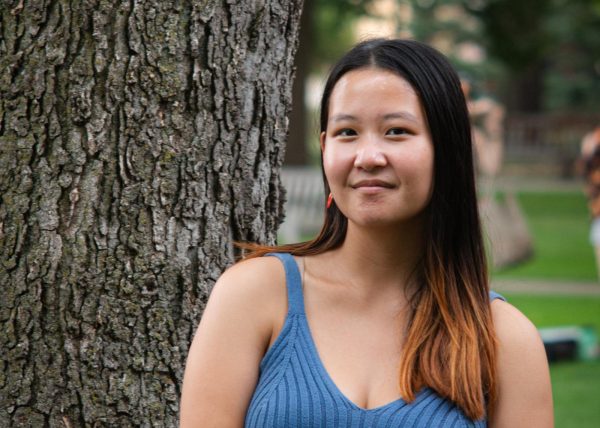Physics and Astronomy Department host first open observatory night in three years
September 22, 2022
On Monday, Sept. 19, the Physics and Astronomy Department hosted their first open observatory night in three years. Macalester students were invited to Olin-Rice 404 from 7-10 p.m. where they gained access to the astrolab and observatory, and even had the chance to look out through the telescope.
The event was hosted by three physics and astronomy students, Ethan Scheelk ’24, Olivia Laske ’24 and Charles Burton ’24. The three all took the class “Observational Astronomy” the spring 2022 semester, where they learned the skills that allowed them to welcome others to the observatory.
Several students in attendance inquired about the requirements for the observational astronomy course, which stirred conversation amongst the students hosting, who had come into their Macalester education during a strange period of time during the module system. According to the Macalester Registrar, the prerequisites for observational astronomy include PHYS 113 Modern Astronomy I, as well as an upper level natural science course or PHYS 120 Astronomical Techniques.
The course is taught every other year in the spring semester by professor John Cannon in the physics and astronomy department. Cannon is an observational astronomer by trade and teaches astrophysics during the alternate springs from observational astronomy, allowing students to take both classes over the course of their junior and senior years.
“There were definitely people who were not physics majors in our class,” Burton assured interested students.
According to Burton, the telescope on the roof of OLRI is custom built for the college and the positioning of its observatory. The unique setup of the telescope allows the viewer to better be able to deal with the interference from the surrounding environment, such as light pollution from Minneapolis and from Macalester’s own athletic facilities.
“The lights in JWall are also kind of a nuisance, [Cannon] actually got facilities to turn them off at 11 p.m. because they were on all night for no reason,” Burton said.
The telescope has three different focal length eyepieces that have various levels of zoom, as well as a camera, which fits into the same slot as the eyepieces. The changes in the eyepieces cause a mirror within the telescope to shift up or down, which allows the viewer to shift the levels of zoom and focus.
“The telescope is actually slowly moving,” Burton said. “It is essentially locked up with the star.”
This movement allows the observer to track their selected target for an extended period of time, and also to view the image from a second monitor, synced to the camera and monitor in the observatory. They can also set up code to take photos at certain time increments.
Laske explained some of the more technical aspects of the programs that they use to focus on different stars and objects of interest. The app shows things like ascension and declination, which are celestial coordinates, comparable to the way we use latitude and longitude on maps.
“This is the telescope,” Burton said of the large PC in OLRI 404. “We have a wall of wires behind there …”
“… and that goes up through to the roof, to the top,” Laske continued.
The opportunity to view the stars drew more than just students to the open observatory night. Professors Dennis Cao and Leah Witus from the chemistry department made an appearance about an hour into the event, accompanied by their two children. The four accompanied the third group of students to journey into the observatory’s dome, during which it began to rain.
The students hosting the event took action quickly, closing the open slit in the dome as well as covering and shutting down the telescope.
“It was supposed to be a really clear night and it just kind of clouded over,” Laske said.
Even with the surprising inclement weather, many students waiting to go into the observatory still made the trek up the spiral staircase, even with the dome being closed.
Rather than end the event all together, the physics and astronomy students answered questions about the major and classes they had taken previously, and explained more about the telescope’s system. The rain also spurred questions regarding snow and utilizing the telescope during the winter time.
“If particulates do get inside the mirrors and get stuck in the mirror they will dirty the image,” Scheelk said.
However, te students didn’t recall snow interfering with their work, or during their training during Jan. 2022. The entire dome that shields the observatory is capable of rotating, and the movement of the panel that covers the slit opening knocks off any snow that might reside on top of it.
“It was literally never a concern, I do not remember snow ever being a problem,” Scheelk said.
Even with the wealth of knowledge they were able to share, the students are still newcomers to astronomy. The group of juniors were essentially flying blind when it came to hosting this event, since current seniors are the only class to have attended Macalester when these nights were hosted previously.
Burton and Laske explained that at the end of the spring 2022 semester, several students from their observational astronomy course were talking about restarting the observatory open houses, which had previously been held each week.
The physics and astronomy students plan to hold more of these open houses on a weekly basis, keeping the time consistent, on Mondays from 7-10 p.m. throughout the fall semester. They encouraged attending students to return for another open house on a night with better weather, where they believe that they may be able to view the rings on Jupiter and Saturn.














